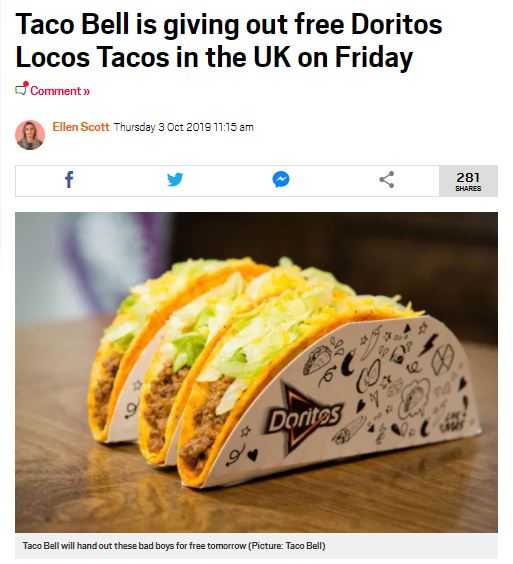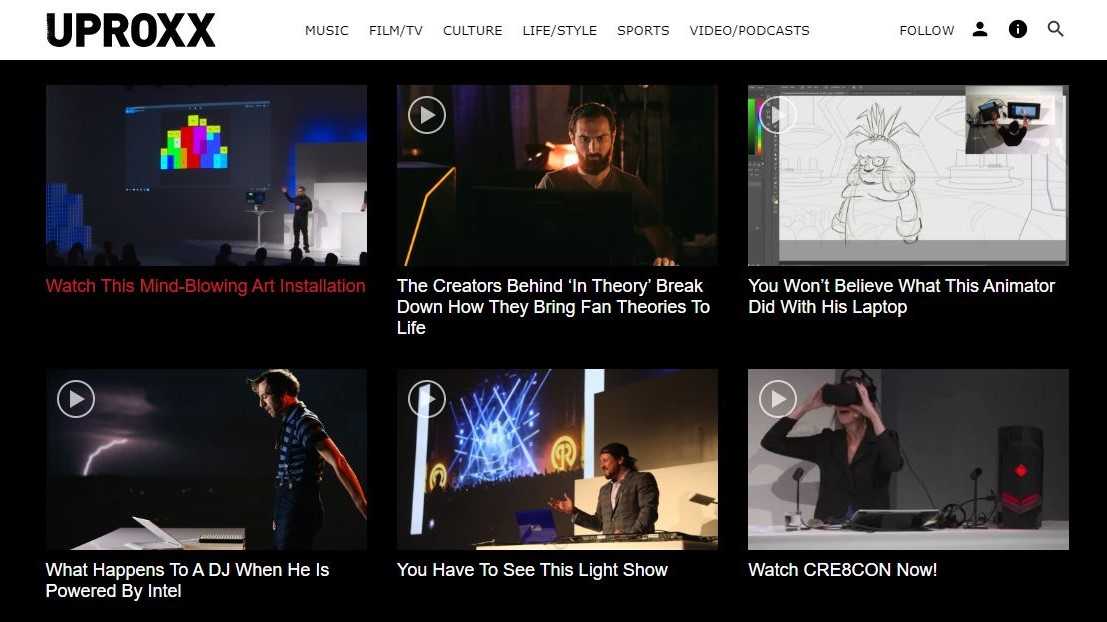The complete guide to co-branding partnerships
- Publication date
- Author
- Imogen Beech
- Reading time
- 8 minute read
Updated: 9th November 2021
The likelihood is that you’ve heard of co-branding. After all, it’s one of those terms that gets thrown around left, right and centre whenever anyone even mentions partner marketing or strategic partnerships more generally. And it seems to work for all the big guys (Red Bull, Intel, Apple…need we say more?).
But what exactly is it?
Here, we break down precisely what a co-branding partnership involves (and whether your managers really know what they’re talking about when they continually use that word to incorporate any kind of partnership under the sun!). So, saddle up and get ready to find out what a co-branding collaboration could do to help you grow your business.
Our partner intelligence and discovery engine can help you uncover thousands of partnership opportunities for co-branding and more.
Co-branding is when companies associate their branding as part of a strategic marketing partnership. Usually, this would involve two companies collaborating on a co-branded marketing campaign – for example, they might hold an event or release an ad that carries both of their branding as a way of leveraging one another’s reputations and market reach.
While a co-branded marketing campaign can often be standalone, it can also be part of a larger collaboration where companies co-brand a product. Let’s take a closer look...
There isn’t really any limit to the ways you can collaborate with another company on a co-branding partnership. Successful co-branding campaigns thrive on creativity, so you can certainly afford to think outside of the box when you’re approaching this kind of partnership.
However, we can pretty much split most co-branding attempts into two broad categories.
Communications-based co-branding is when companies partner on a marketing campaign that jointly promotes one another’s brands.
This could be something as simple as two companies splitting the cost of a billboard that promotes them both. Or, it could be as complex as two brands collaborating to launch a joint event or pull off a publicity stunt.
Perhaps the most famous example of communications-based co-branding is Red Bull’s partnership with GoPro. These brand partners have collaborated on a number of events, but their most memorable was ‘Stratos’ in 2012, where Felix Baumgartner jumped from a helium balloon 24 miles above the earth.
He shattered the sound barrier, broke three world records and filmed the whole thing on a GoPro! The event gained a ton of publicity for both brands.

Product-based co-branding is when brands collaborate to create a product that incorporates both of their individual identities.
One excellent co-branding example of this kind is Taco Bell’s collaboration with Doritos on Doritos Locos Taco. Frito-Lay took Taco Bell’s crunchy taco recipe and gave it a twist by adding a Doritos shell.
The use of both companies’ branding was essential to the product’s marketing efforts, with the product even being photographed wrapped inside a classic Doritos bag! In fact, the co-branding partnership was so successful that Taco Bell sold approximately 1 billion units in the first year since the product’s launch.
The partners continued to maximise on PR opportunities by handing out free Doritos Locos Tacos from time to time, such as on National Taco Day 2019 in the UK.

If this is an area you’ve looked into previously, you may also have come across the term ‘ingredient branding’. This is a particularly popular kind of product-based co-branding that involves marketing a product using the name of the brand that provided one of its ingredients. Betty Crocker’s brownie mix with Hershey’s Chocolate Syrup is just one famous example. Or, just look at Dell Computers with Intel Processors.
If reading this guide is getting your head in a bit of a spin, don’t worry. There’s a massive amount of overlap between the different types of strategic partnerships, especially when it comes to co-branding. Let’s take a look at a couple of the biggest overlaps…
Content marketing partnerships often go hand in hand with co-branding, as most content collaborations feature the branding of both partner companies. For example, in a sponsored article, you’re likely to see both brands’ logos displayed at the top of the page. Or, in a piece of video content, both brands are likely to be mentioned in the title sequence.
Often, the aims of both types of partnership are also similar, with brands looking to leverage a partner’s market reach and reputation. In fact, if you check out our list of top co-branding examples and compare them to our selection of excellent content marketing partnerships, you’ll see one collaboration that's made it onto both (and many more that could have done).
However, it really depends on the type of content marketing partnership we’re talking, as not all content partnerships bear a resemblance to co-branding. Many brands turn to content collaborations to receive SEO benefits, for example, which can often look very different. Read our guide to content marketing partnerships for more.
Were you reading the section above about product-based co-branding thinking: wait, isn’t this just a joint product partnership?!
If so, you’re not wrong! A product-based co-branding partnership is essentially a kind of joint product launch. The main difference, however, is this:
A joint product partnership can be formed for all sorts of reasons – a company might choose to partner with another to fill a gap in technology or to make their product more competitive… the list goes on. However, in a product-based co-branding partnership, the focus is on using both companies’ branding to reach new audiences and (eventually) drive more sales.
That said, there are a few partnerships that we'd say fall into both categories. For example, Spotify and Uber's partnership has made it onto our list of fantastic co-branding examples (above) and our list of the best product partnership examples. Go them!
The terms co-branding and comarketing are often used interchangeably as they can look pretty much identical. However, there is a (very subtle!) difference.
While co-branding literally refers to the act of putting both businesses' branding on something, comarketing refers to the act of the brands jointly promoting it. In other words, partners could team up on a joint piece of content that has both of their logos on it and that would be co-branding. But the act of both brands sharing the content across their channels counts as comarketing.
As you can see, it's only a small difference and there's quite a lot of overlap between the two. In fact, there's one particularly famous partnership that's made it onto both our lists of top co-branding and comarketing examples. As you can imagine, where there's one, you'll often find the other!
Find thousands of relevant partnership opportunities to help you meet your goals with Breezy.
If you’re wondering why branding partnerships are so important, wonder no more. Here are some of the fantastic things that co-branding can help you achieve:
The most important thing to remember is that in order for a co-branding collaboration to work, both brand partners need to benefit. Often, partners in a co-branding venture will have the same aims – for example, in Red Bull and GoPro’s instance, both were able to expand their market reach and, in doing so, drive sales.
However, sometimes, partners will benefit in different ways. For example, when Intel and UPROXX collaborated on their CRE8CON event, Intel was able to showcase the versatility of its software to a live and on-demand audience. Meanwhile, UPROXX benefited from hosting the video content created on its website, gaining it more traffic.

Ultimately, if you’re looking for a brand partner, it’s important to put yourself in your partner’s shoes. Maintaining a partnership is even harder than starting one, so you need to ensure that both sides are going to be equally invested in making it work.
After all this, perhaps you’re thinking that co-branding partnerships sound too good to be true. What’s the hitch? Well, co-branding is a great way of expanding your market reach, improving your reputation and ultimately, growing your business. But it’s not without its risks. If you enter into a partnership without thinking it through fully, there are a number of simple errors you could make, which could jeopardise the whole exercise.
Check out our piece on why strategic partnerships fail to find out more.
Finding a co-branding partner can take some time and research, but it’s not rocket science. After all, as long as you can demonstrate to potential partners that they would obtain value from partnering with you, what is there to lose?
If you’re looking to find a co-branding partner, just follow these simple steps.
Usually, potential co-branding partners will be complementary brands who are often in the same industry as you. The first step is to list some potential partners – to do so, you can check which companies show up for your search terms on Google, network at industry events or scour social media for like-minded brands. Read our article about how to find strategic partners for a step-by-step guide.
Alternatively, you could simply sign up with Breezy to uncover hundreds of relevant brands who could be open to a co-branding partnership.
Next, you’ll need to whittle down your list to brands that are worth approaching. Pick out brands whose audience matches yours and who could benefit from a partnership just as much as you could. Our piece on creating strategic partnerships that work for your brand is a useful resource here.
Once you’ve done your research, it’s time to approach some potential partners. Make sure that you’re clear about why you’ve chosen to approach each brand in particular. And, in order to make the chances of a ‘yes’ more likely, it’s useful to suggest some ideas of co-branding activities that you’d be interested in collaborating on.
Make sure that you’re clear about your aims, but at the same time, try not to be too set in stone with your ideas. After all, a truly great branding collaboration depends on utilising the creativity of both partner brands to create something that neither could have achieved alone!
After the negotiations have drawn to a close, make sure that you formalise your agreement by signing a contract. That way, both partner brands can set out their expectations and agree on how exactly this partnership is going to work.
We’d recommend talking to a lawyer to ensure that both parties are adequately protected. However, you can also check out this joint marketing agreement on Pandadoc, which could be a good starting point.
--
So, whether you’re a small business just getting started or one of the big Apples or Googles of this world, a co-branding partnership is a great way of reaching new audiences, tailoring the way that your brand is perceived by the public, and ultimately, driving sales. With the right brand partner standing beside you (or at least, with their logo standing beside yours!) there’s nothing you can’t achieve.
To get started, book a demo with Breezy to check out how our advanced partner discovery engine can help you grow your business. Then, enjoy scrolling through hundreds of potential co-branding partners relevant to your brand, before choosing the perfect opportunities to help you reach your goals.
Find thousands of relevant partnership opportunities (way!) more quickly with our partner intelligence and discovery engine.
Imogen is a copywriter and content writer with over two years’ experience writing about the exciting world of strategic partnerships, as well as running her own business. She loves learning about new topics as she writes, and has enjoyed penning articles on industries ranging from mortgages to events, theatre to home improvements and everything in between.
View more by Imogen Beech